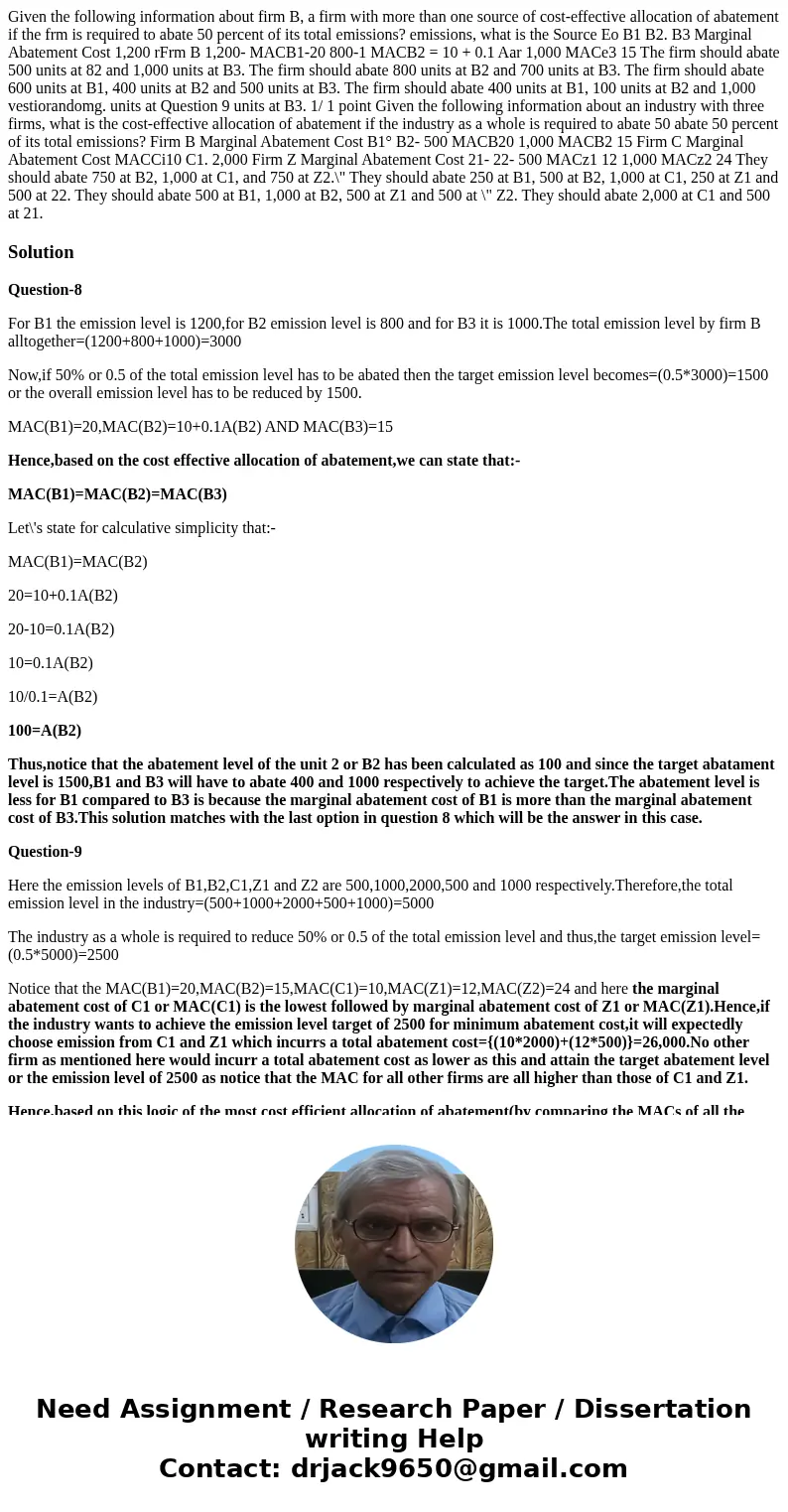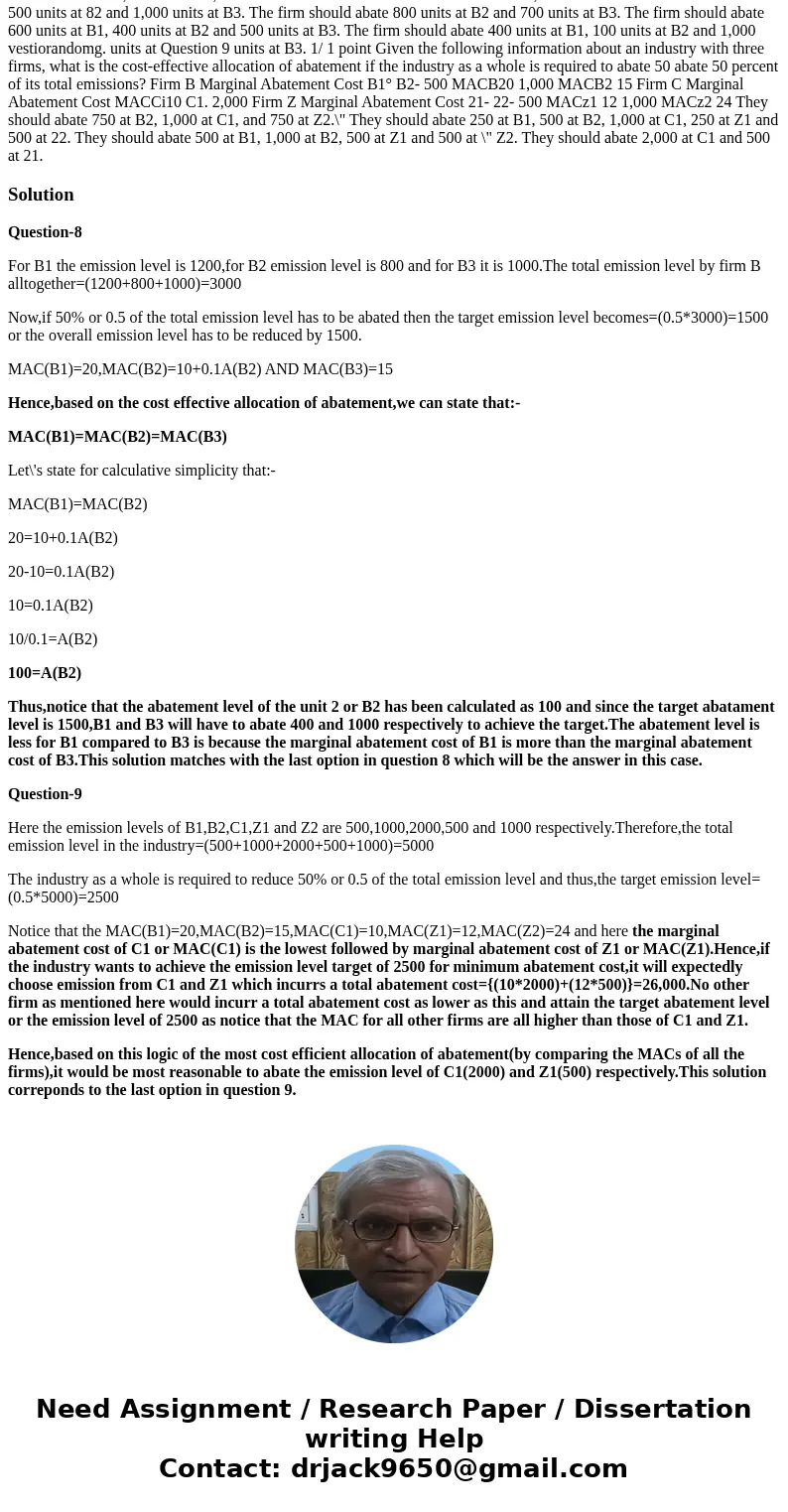Given the following information about firm B a firm with mor
Solution
Question-8
For B1 the emission level is 1200,for B2 emission level is 800 and for B3 it is 1000.The total emission level by firm B alltogether=(1200+800+1000)=3000
Now,if 50% or 0.5 of the total emission level has to be abated then the target emission level becomes=(0.5*3000)=1500 or the overall emission level has to be reduced by 1500.
MAC(B1)=20,MAC(B2)=10+0.1A(B2) AND MAC(B3)=15
Hence,based on the cost effective allocation of abatement,we can state that:-
MAC(B1)=MAC(B2)=MAC(B3)
Let\'s state for calculative simplicity that:-
MAC(B1)=MAC(B2)
20=10+0.1A(B2)
20-10=0.1A(B2)
10=0.1A(B2)
10/0.1=A(B2)
100=A(B2)
Thus,notice that the abatement level of the unit 2 or B2 has been calculated as 100 and since the target abatament level is 1500,B1 and B3 will have to abate 400 and 1000 respectively to achieve the target.The abatement level is less for B1 compared to B3 is because the marginal abatement cost of B1 is more than the marginal abatement cost of B3.This solution matches with the last option in question 8 which will be the answer in this case.
Question-9
Here the emission levels of B1,B2,C1,Z1 and Z2 are 500,1000,2000,500 and 1000 respectively.Therefore,the total emission level in the industry=(500+1000+2000+500+1000)=5000
The industry as a whole is required to reduce 50% or 0.5 of the total emission level and thus,the target emission level=(0.5*5000)=2500
Notice that the MAC(B1)=20,MAC(B2)=15,MAC(C1)=10,MAC(Z1)=12,MAC(Z2)=24 and here the marginal abatement cost of C1 or MAC(C1) is the lowest followed by marginal abatement cost of Z1 or MAC(Z1).Hence,if the industry wants to achieve the emission level target of 2500 for minimum abatement cost,it will expectedly choose emission from C1 and Z1 which incurrs a total abatement cost={(10*2000)+(12*500)}=26,000.No other firm as mentioned here would incurr a total abatement cost as lower as this and attain the target abatement level or the emission level of 2500 as notice that the MAC for all other firms are all higher than those of C1 and Z1.
Hence,based on this logic of the most cost efficient allocation of abatement(by comparing the MACs of all the firms),it would be most reasonable to abate the emission level of C1(2000) and Z1(500) respectively.This solution correponds to the last option in question 9.


 Homework Sourse
Homework Sourse